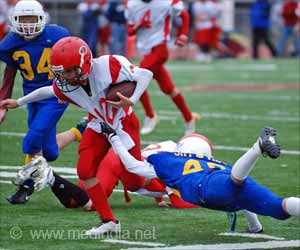In the undergraduate curricula of all UK medical schools is physical activity education. Are tomorrow's doctors equipped to follow clinical guidelines?

This knowledge gap will leave tomorrow's doctors ill equipped to promote physical activity effectively to their patients and stem the rising tide of serious disease associated with lack of exercise, say the authors.
They base their findings on the results of a survey sent to the curriculum lead or director for medical studies for each of the UK's 31 medical schools.
This asked about the form and content of key aspects of education on the promotion of physical activity, in accordance with national guidelines, and the total amount of time given over to teaching the basic science and health benefits of physical activity across the undergraduate course.
The education leads were asked to name the specific teaching modules in which physical activity education appeared. And they were asked if the Chief Medical Officer's (CMO's) guidance on physical activity―which spans all age groups, and which was published last July―appeared anywhere in the curriculum.
The responses uncovered "some alarming findings, showing that there is widespread omission of basic teaching elements," say the authors.
Advertisement
Only half (15) schools included the current CMO guidance on physical activity in their course, despite it being endorsed by all four UK departments of health.
Advertisement
The total amount of time spent on teaching physical activity was "minimal", the responses showed, averaging just 4 hours compared with an average of 109 hours for pharmacology, say the authors.
The specific modules in which physical activity featured varied widely, but it was most often included in public health, cardiology, respiratory medicine and endocrinology.
Only two schools said it was included in health promotion and in community and general practice.
The authors point to 39 different clinical guidelines for specific diseases and conditions in which physical activity features as a method of treatment, and highlight the fact that most of the population lives largely sedentary lives.
"A basic understanding of the benefits of physical activity, how to effectively promote it (with behaviour change techniques), and combat sedentary behaviour for different age groups underpin the ability of future doctors to manage modern non-communicable chronic diseases and follow clinical guidelines," conclude the authors.
They call for dedicated teaching time on physical activity for all medical students, as a matter of urgency.
Source-Eurekalert














